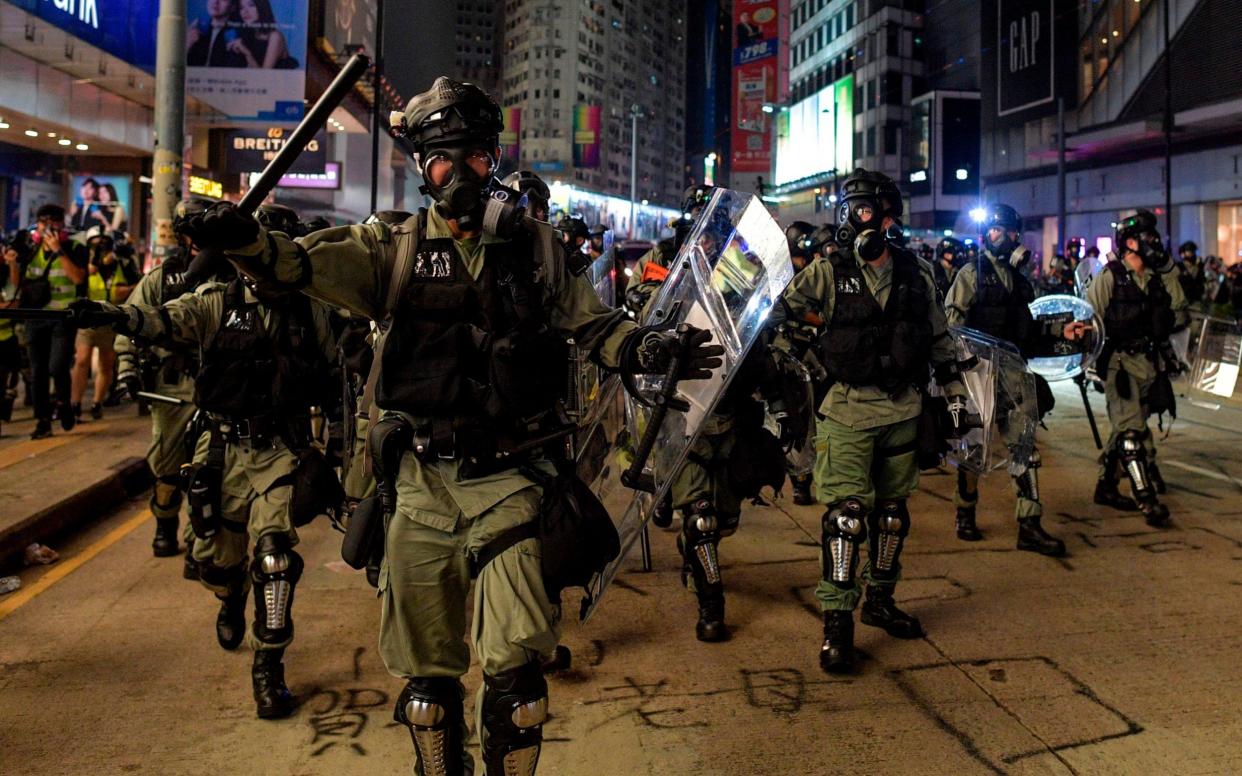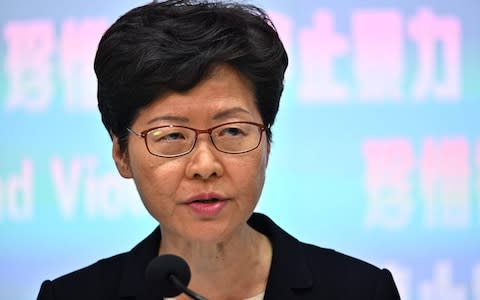Fourteen-year-old shot in clashes between Hong Kong protesters and police in wake of face mask ban

A 14-year-old boy was shot as clashes broke out between protesters and police in Hong Kong on Friday in the wake of a blanket ban on face masks. Demonstrators stormed the city’s shopping district and set fire to Chinese banks.
Police said a 14-year-old boy was shot in the thigh, but said it was unclear if he was hit by a stray bullet or shot by a police officer who fired his gun after being attacked by a group of protesters.
The Hospital Authority said a 14-year-old boy was taken to hospital and was last night in serious condition.
The incident would mark the second time live rounds have been fired against protesters since the demonstrations began.
The face-mask ban invokes colonial-era emergency powers for the first time since the UK handed the city back to China in 1997.
Police fired tear gas and all metro services to Hong Kong Island were halted as some stations also came under attack from protesters.
The new face mask law will ban demonstrators from covering their faces in full or partially to prevent their identification during protests, marches or illegal assemblies, with violators facing up to one year of imprisonment or a maximum fine of $3,190.

At a press conference flanked by her most senior ministers, Carrie Lam, the embattled Chief Executive, said the government enacted the unpopular measure out of duty to “end violence and restore order” to the city, which was now in a “very critical state of public danger” after four months of anti-government protests.
The decision to invoke the colonial-era Emergency Regulations Ordinance to push through the face mask ban was “difficult but necessary for the public interest” after scenes of chaos and panic, she argued.
As protesters gathered following the announcement, China voiced support for "extremely necessary" ban.
The new law is aimed primarily at students, the most active participants in the city’s protests, which began in June against a contentious bill that would have allowed extradition to mainland China, but has since snowballed into a demand for greater rights, including universal suffrage.
Schools across the financial hub have already been issued with details of the “Anti-mask act.”
The ban was introduced after the worst street violence in decades this week when an 18-year-old demonstrator was shot and critically wounded during a clash with the police. However, the dramatic step by Carrie Lam’s government threatens to inflame tensions further.

Opponents of the measure fear that the use of the Emergency Regulations Ordinance – a colonial-era law first used by the British government to quell a seamen’s strike in Hong Kong harbour in 1922 – could open the door to sweeping controls.
They fear that the government could use the ordinance as a form of martial law that would permit authorities to implement any new regulation the government believes would help end “an occasion of emergency or public danger.”
Examples could include greater powers to arrest citizens, censor publications, shut off communications networks and search premises without warrants.

